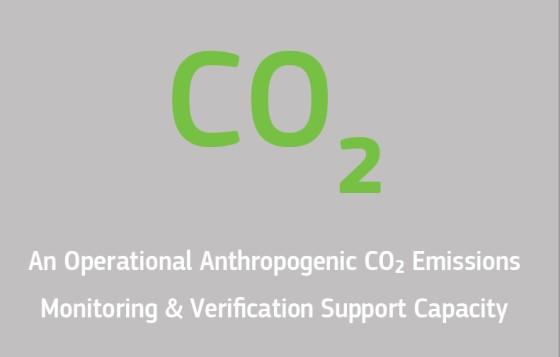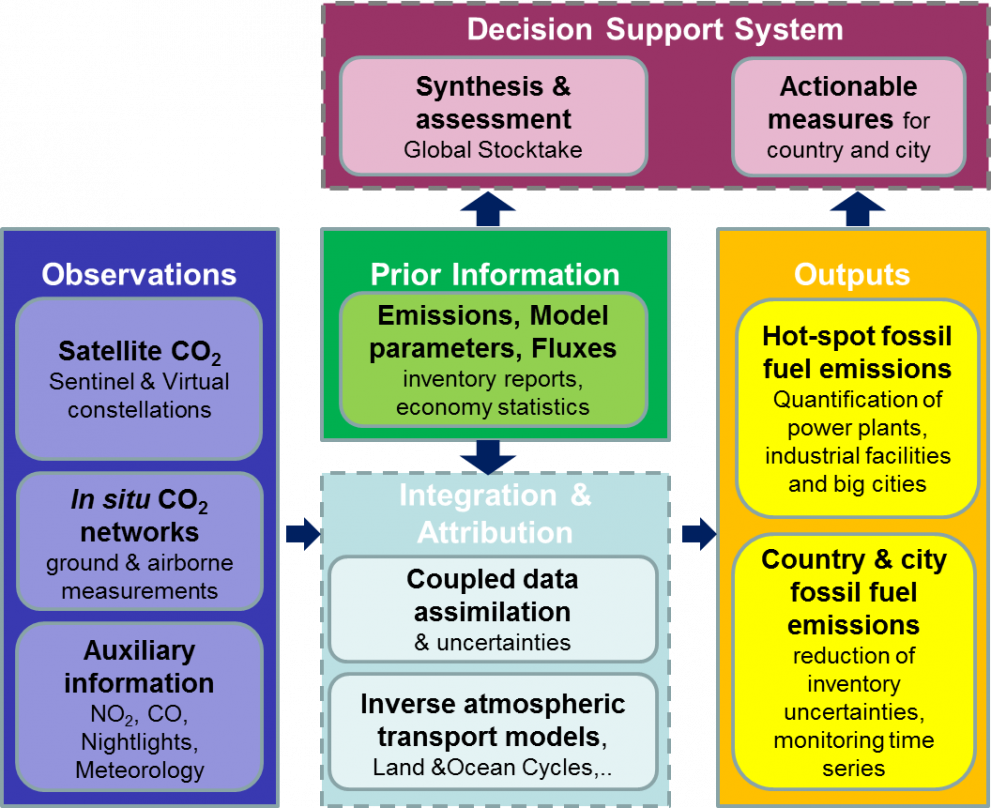
The European Commission has taken the initiative to set up an Operational Anthropogenic Carbon Dioxide (CO2) Emissions Monitoring & Verification Support (MVS) Capacity in the frame of the Copernicus programme.
The latest developments in this Copernicus CO2 MVS capacity are discussed in a recent report – the CO2 green report – of the European Commission’s CO2 Monitoring Task Force, which addresses the needs and high level requirements for in situ measurements in support of the MVS capacity. The report highlights in particular the benefits of ensuring the sustainability of essential networks and proposing adequate governance schemes.
The report aims to alert stakeholders of the necessity to consider the in situ dimension of the CO2 MVS capacity and to motivate organisations already involved in measuring emissions to help advance the current state of play, which would greatly improve measurements of man-made CO2 emissions.
Space-based and in situ measurements of man-made CO2 emissions
The European Commission’s CO2 ‘green’ report describes the requirements of in situ observations of anthropogenic CO2 emissions to help calibrate and validate Copernicus satellite observations, and to evaluate and therefore improve the quality of the information delivered by the CO2 MVS capacity over a range of scales, from large urban areas or industrial complexes to country and global scales.
As illustrated below, the proposed European CO2 MVS capacity optimally combines the satellite observations (to be provided by a constellation of dedicated sentinel satellites), in situ measurements gathered by dedicated networks, and geophysical models.

The first Monitoring and Verification Support capacity of its kind, the European Commission’s CO2 MVS will help Europe to drive developments of a similar nature in intragovernmental frameworks; efforts have already begun in this direction, in international bodies such as the United Nations Framework Convention on Climate Change (UNFCCC), or the World Meteorological Organisation (WMO).
To overcome the current limitations of in situ networks, the report lists several recommendations, in particular to:
- ensure the sustainability of essential research networks such as the Total Carbon Column Observing Network (TCCON) and others,
- enhance existing network capabilities to include, in particular, new observations such as radiocarbon (14C) and co-emitted species from fossil fuel burning,
- propose adequate governance schemes to be coordinated at the international level given the global dimension of issues at stake.
Carbon dioxide: a major contributor to global warming
Carbon dioxide (CO2) is a long-lived greenhouse gas (GHG) that plays a major role in influencing Earth's surface temperature through the induced greenhouse effect.
Since the Industrial Revolution, man-made activities have produced a 45% increase in the atmospheric concentration of CO2, from 280 ppm in 1750 to 415 ppm in 2019 - the highest concentration ever over the last 14 million years. This is largely due to the burning of fossil fuels and to deforestation.
This increase in CO2 and other long-lived GHGs in the Earth's atmosphere translate directly into the current situation of global warming. At the Paris climate conference (COP21) in December 2015, 195 countries adopted the global climate deal with contributions of each of the countries to reduce greenhouse gas emissions, which are reported and monitored in a transparent way.
European Commission’s CO2 Monitoring Task Force
In 2015, an international expert study initiated by the European Commission resulted in a series of recommendations to set up, in the context of the Copernicus Climate Change service, a CO2 emission monitoring system strongly underpinned by space-based observations. This “blue” report happened to be quite timely in anticipating the needs of the international community, given the success of the COP21 a few months afterwards in reaching the Paris Agreement.
Through the CO2 Monitoring Task Force, the European Commission then elaborated the space- and ground-based elements for an operational capacity to monitor and verify measurements of anthropogenic CO2 emissions: the CO2 MVS Capacity. The CO2 Monitoring Task Task Force includes international experts and representatives from the European Space Agency (ESA), the European Organisation for the Exploitation of Meteorological Satellites (EUMETSAT) and the European Centre for Medium-Range Weather Forecasts (ECMWF).
The CO2 MVS capacity will help evaluate the implementation and effectiveness of the many CO2 emission reduction strategies proposed by each of the signatories to the Paris Agreement.
The ‘green’ report complements a series of 3 reports published by the CO2 Monitoring Task Force over recent years. The "blue" report provides an overview of the state-of-the-art on observation-based monitoring of CO2 emissions, the "red" report elaborates a full system architecture for monitoring and verifying anthropogenic CO2 emissions in the frame of the Paris Agreement, and the latest "green" report describes the needs for in situ CO2 measurements to validate the deliverables from this capacity.

Reducing emissions in the European Green Deal

European Commission President-elect von der Leyen’s has proposed the European Green Deal aims to raise the current EU 2030 target of reducing emissions to at least 50%, possibly 55%, as a further step towards making EU carbon-neutral by 2050.
The proposed Copernicus CO2 MVS capacity will help monitor progress towards this goal, and inform policy measures to further its achievement.
In addition, in her mission letter to the new commissioner in charge of Space affairs, President von der Leyen stated: “We should explore ways in which we can make the most of our assets to deliver on climate objectives, including the use of Copernicus to monitor CO2 emissions”
Further information
- CO2 Green Report 2019: An Operational Anthropogenic CO2 Emissions Monitoring & Verification Support Capacity
- CO2 Red Report 2017
- CO2 Blue Report 2015
- Copernicus – Europe’s eyes on Earth
- ICOS ready to develop into a full-service provider of in situ greenhouse gas data, in line with the EU’s “Green Report”
Related Content
Details
- Publication date
- 21 October 2019
